#mrs caroline schermerhorn astor
Text




THE GILDED AGE + ART [2/∞]
Young Caroline Webster Schermerhorn (1860) by an unknown artist
Mrs William Astor (1890) by Carolus-Duran
Caroline "Lina" Schermerhorn Astor played by Donna Murphy
#the gilded age#thegildedageedit#lina astor#caroline astor#mrs astor#donna murphy#costume drama#costume design#19th century#carolus duran#portrait#realism#oil on canvas#art#1860s#1890s#victorian era#gilded age#the gilded age + art#🎥🎥
82 notes
·
View notes
Photo
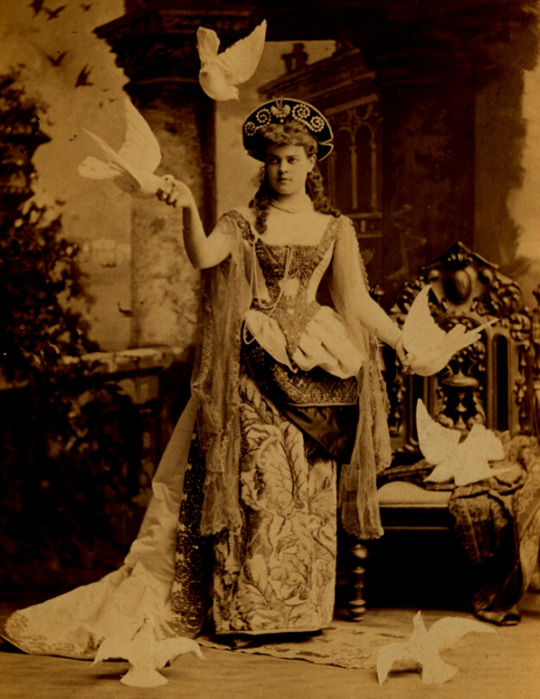
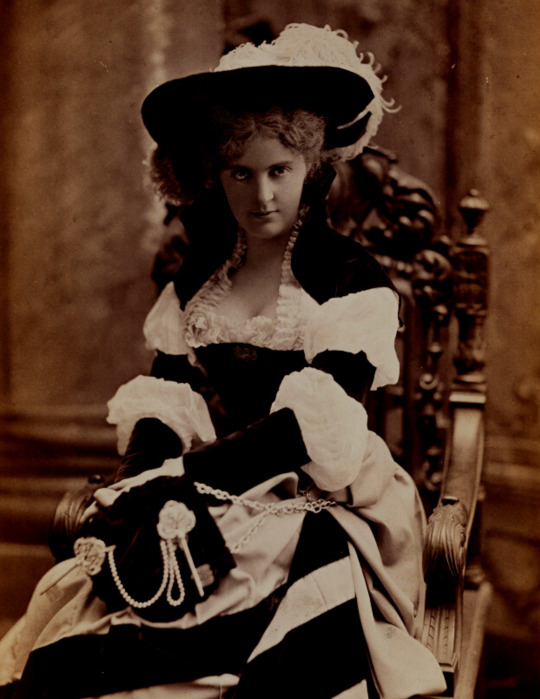

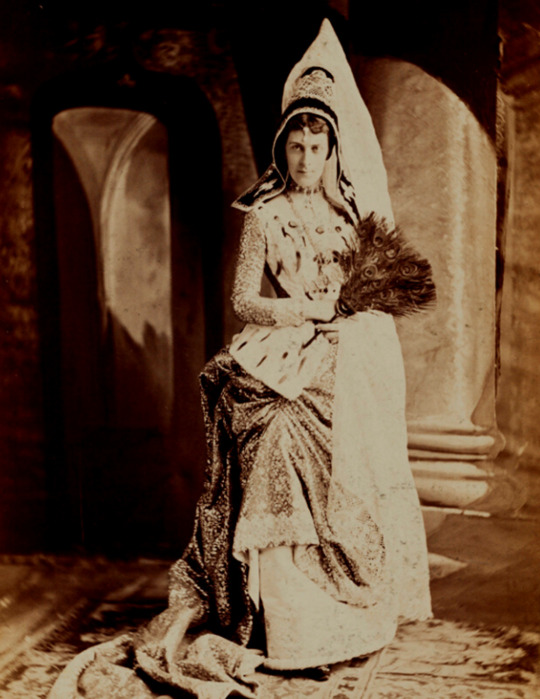

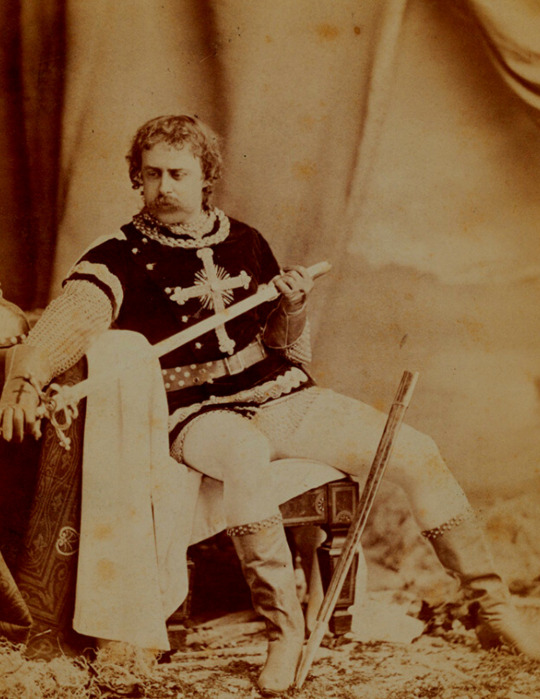

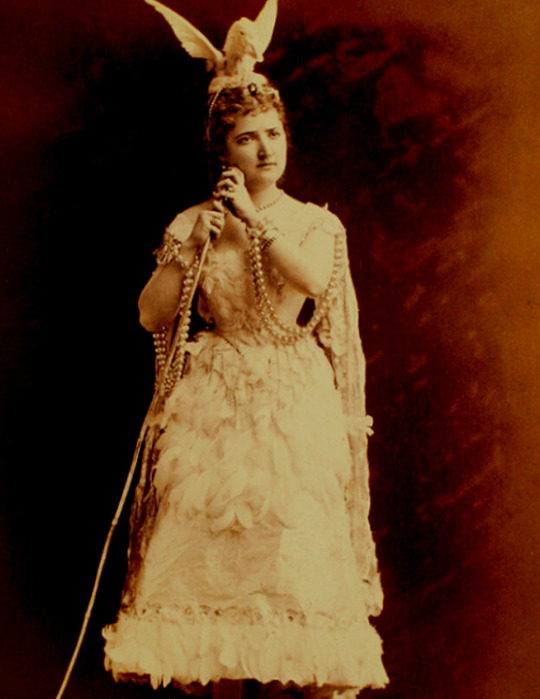
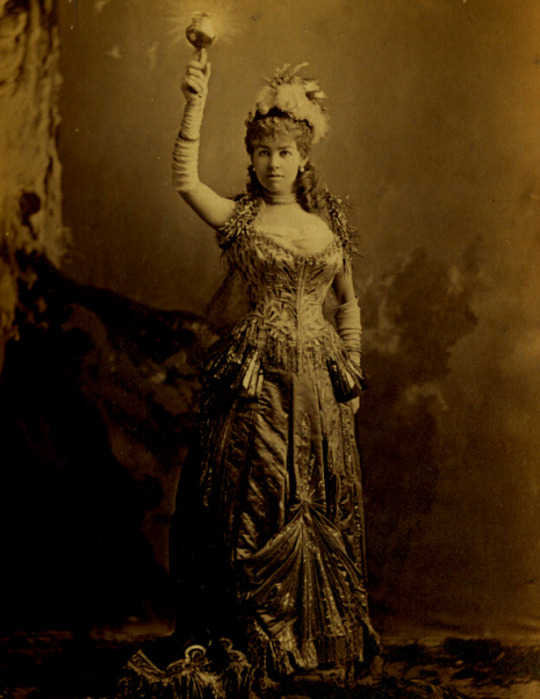
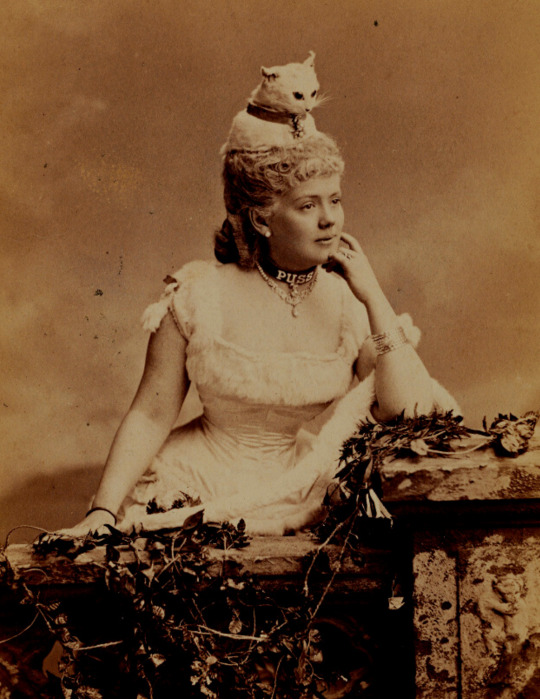
in 1883, new york’s elite party was hosted: mrs. w.k. vanderbilt’s costume ball. in this era, caroline schermerhorn astor dominated the gilded age society. she determined who was put on this invitation list
#history#women in history#ph#photography#vintage photography#vintage#glided age#fashion#historyedit#caroline schermerhorn#new york#1800s
726 notes
·
View notes
Text

Painting, 1890, American.
By Carolus Duran.
Portraying Caroline Astor in a black evening dress.
Met Museum.
#carolus duran#womenswear#dress#19th century#silk#met museum#american#1890#1890s#1890s usa#1890s dress#1890s painting#Caroline Astor#black#1890s evening
47 notes
·
View notes
Text
Astor Mansion

The Astor Mansion was originally built as a double home for Caroline Webster Schermerhorn Astor and her son John Jacob Astor IV (who died on the Titanic in 1912). The mansion was designed by Richard Morris Hunt, who used French Renaissance architecture of the Louis XII and Francis I period as inspiration. The home was completed in 1896 and would be the largest of its kind on Fifth Avenue.
The Mrs. Astor was probably the greatest socialite in the United States and reigned supreme over New York society to the extent that her annual social calendar was widely publicized. During the winter, she would host gatherings at her mansion on Fifth Avenue, offering teas, receptions, and the most luxurious dinners. The highlight of the season was her annual ball, always held in January on Monday night, with dinner at 11 p.m. and dancing until dawn. Her new ballroom could accommodate 1200 guests, compared to 400 in her previous mansion.
After Caroline Astor died in 1908, her son JJ converted the double mansion into a single home for his family, and it is this single-family version that I have tried to replicate. The Astor mansion was demolished around 1926.
(Unfortunately, in my game, this house appears to be "cursed", as all the sims I've put in it have died in tragic accidents…)














42 notes
·
View notes
Text
The Gilded Age's Broadway Divas: Caroline "Lina" Schermerhorn Astor (Donna Murphy)
A queen among her people, Mrs. Astor rules over New York high society, and spends the show being challenged by New Money Bertha Russell at every turn.

Two-time Tony winner Donna Murphy is one of Broadway's greatest Divas. Though most recognize her as the voice of Disney's Mother Gothel in Rapunzel, her voice is better known to me personally as one of my earliest gay awakenings for her audiobook performance of Ruby Holler, but that's a separate story. One of Sondheim's most beloved interpreters, Donna has such an expansive repertoire that limiting myself proved damn near impossible. Her Tonys for Best Actress in a Musical were in 1994 (Passion) and 1996 (The King and I) and I will forgive her for the later despite my documented hatred of that musical.
Other sumptuous performances include: The Mystery of Edwin Drood (Ensemble, later Drood), Wonderful Town (Ruth), Hello Dolly! (Bette Midler's Tuesday night alternative and superior performer in every way), and Encores! Dear World (my #1 theatre experience of 2023). With the later two, Donna is well on her way to achieving the Jerry Herman trifecta. Someone mount a production of Mame starring Donna Murphy as Mame.
#1: "Could I Leave You?" Follies - The Stephen Sondheim 80th Birthday Concert (2010)
youtube
Many a Diva has taken on this song, but no one can come close to the rapturous performance Donna Murphy gives during the iconic Ladies in Red segment of the Sondheim 80th birthday concert. This video right here is the reason I am the Sondheim woman that I am. There have been many women who have played Phyllis over the years, and I've fallen a little in love with all of them (Jan Maxwell, my beloved), but Donna is everything.
Surrounded by five other iconic Divas dressed in red, Donna shows that her acting choices whilst singing remain unmatched. The controlled start, the rapid devolution, the rage in that final word. And the strands of hair that will not stay out of her face. I am obsessed. The reactions of the other women (note Patti LuPone's glee and Marin Mazzie, dear friend and Passion co-star's bursting pride) say it all. The entire concert is one marvel after another. Do yourself a favor and watch it.
I consider this song one of Sondheim's greatest works (Send in the Clowns, eat your heart out...but also...Donna did that at the 90th birthday concert, so there's that too).
#2: "Hit Me With a Hot Note," a benefit for Fran Liebergall (2015) and What About Joan (2001)
youtube
youtube
I couldn't decide which version to post, so you get both. Congratulations. This song showcases Mrs. Astor's wild side as Donna delves into growls, shimmies, shakes, and belts. "Hit Me with a Hot Note" is a Duke Ellington song that appeared on Broadway in Jelly's Last Jam (which will receive an Encores! production this spring). I never thought a white woman could scat, but I'm not mad about it.
The first video is a concert benefit for Fran Liebergall in 2015. The second is from a short-lived tv series in the early 2000s where Donna plays Ruby Stern, a smart and staid doctor who has a dream of appearing on Broadway. Apparently, the producers of the show were totally unaware that two-time Tony winner for Leading Actress in a Musical Donna Murphy could sing. I'm just as shocked by that as you are.
#3: "Surabaya Johnny," LoveMusik (2007)
youtube
Mrs. Astor is one of many real-life historical figures on Donna Murphy's acting resume. Another real-life figure is that of Lotte Lenya, an Austrian-American actress and singer best known for her work/marriage with Kurt Weill. LoveMusik explores that relationship. Lotte Lenya had a distinctive voice, and here Donna transforms her own signature voice to match Lenya's.
LoveMusik received mixed reviews, but garnered four Tony nominations for Best Musical, and Best Leading Actors for Donna and for leading man Michael Cerveris, The Gilded Age's Mr. Watson.
Donna has truly perfected the way to break down during a song.
#4: "The Story of Lucy and Jessie," Follies (2007)
youtube
Prior to the Sondheim 80th, Donna played Phyllis Rogers Stone in the 2007 Encores! production of Follies (alongside Christine Baranski). This was considered her triumphant return to the New York stage following an unsteady attendance record in the early 2000s owing to a long battle with vocal hemorrhaging (running concurrently with multiple miscarriages). Her turn as the jaded former Follies girl was nothing short of sublime. In those days, Encores! concerts weren't remotely the fully choreographed shows they are now. Donna, who describes herself as a "singer who moves well," proves that in spades.
To my everlasting devastation, this clip omits the opening verse, but I think her legs more than make up for it. The little glove removal moment is a nod to an alternate number that has been used in place of this one depending on the production. For singers who are not as dance-capable, "Ah, But Underneath" offers up a sensational strip tease, and I, for one, would have liked to see that too, even if Lucy and Jessie is a better number.
#5: "Loving You," Passion (1994)
youtube
Though her riveting portrayal of a chronical ill woman who seduces a soldier in mid-19th century Italy earned Donna her first Tony, it was not a well-received show. Audiences disgusted by the obsessive and unattractive Fosca would cheer when she collapsed onstage every night. They couldn't fathom how Giorgio (Jere Shea) would leave his affair with the beautiful Clara (Marin Mazzie, who appears totally nude for the opening number) for a sicky woman like Fosca. Since then, like most Sondheim shows, we have come to appreciate the brilliance of the story, the score, and the actors with time.
Donna's immersion into this role is the stuff of Broadway legend. This song in particular, though simple in melody and lyrics, carries such deep emotion, and the way she sings as if every note pains her just ruins me. Her dramatic range cannot be praised enough. The entire proshot can be found HERE, and I cannot recommend it enough.
Story time: a few years ago I bid on the original lobby board that hung inside the theater, and I am now a proud owner of a piece of history. It stands in my living room and is nearly as tall as I am. It is my most treasured possession.
Bonus: For a more comprehensive of all things Donna Murphy, please enjoy this playlist curated by @princesspufferr. And if anyone wants a bootleg of Dear World, I've got you covered.
LINK TO MASTERPOST
8 notes
·
View notes
Text

Mrs. William Astor (Caroline Webster Schermerhorn, 1831–1908) painted by Carolus-Duran (Charles-Auguste-Emile Durant) French, 1890. Mrs Astor would greet guests standing in front of the portrait. MET collection.
The Queen Bee 🐝 of New York’s Gilded Age who led and compiled ‘The Four Hundred’ along with Ward McAllister. A society list of who was deemed New York’s society’s most fashionable in order to distinguish themselves from what they deemed new money arrivals. The members had to be separated by at least three generations from the individual who first made the family fortune.
#art#october 2023#mrs Astor#Caroline Astor#art history#the gilded age#gilded age#carolus duran#oceancentury
8 notes
·
View notes
Photo

Coat. 1898–1900. Credit line: Gift of Orme Wilson and R. Thornton Wilson, in memory of their mother, Mrs. Caroline Schermerhorn Astor Wilson, 1949 https://www.metmuseum.org/art/collection/search/103914
#aesthetic#art#abstract art#art museum#art history#The Metropolitan Museum of Art#museum#museum photography#museum aesthetic#dark academia
1 note
·
View note
Text
Eybymia “Effie” Babanatsou,5-year-old, Rose Pizem, 4-year-old, Saffie-Rose Brenda Roussos, 8-year-old, Louis XVII, 10-year-old, Lois Janes, 7-year-old, Gracie Perry Watson, 6-year-old, Ava Jordan Wood, 14-year-old, Heather Michele O'Rourke, 12-year-old, Judith Barsi, 10-year-old, Ema “Emica” Kobiljski, 13-year-old, Ava Martin White, 12-year-old, Ava Johnson White, 60-year-old, Riley Faith Steep, 7-year-old, Destiny Riekeberg, 9-year-old, Makenna Lee Elrod and Eliahna Torres, 10-year-old, Ava Ellis White, 92-year-old, Nova Henry, 24-years-old, Ava Safiyah Henry-Curry, 10-months-old, Ava Carroll Overton Waller, 87-years-old, Ava Wright Hadley, 67-years-old, Caroline Schermerhorn Astor Wilson, 86-years-old, Caroline Astor, 78-years-old, Emily Astor Van Alen, 26-27-years-old, Charlotte Augusta Astor Drayton, 62-years-old, Mrs Caroline Astor Drayton Phillips, 84-years-old, Helen Rebecca Roosevelt Robinson, 80-years-old, China Machado, 87-years-old, Elizabeth Grace “Bessie” Gahan Myers, 75-years-old, Dorothy Julia “Dodie” Pennebaker Brando, 57-years-old, Jocelyn Brando, 86-years-old, Frances Elizabeth “Frannie” Brando Loving, 71-years-old, Lois Ayers Coggins, 90-years-old, Frances Ellen Watkins Harper, 85-years-old, Irmgard Christine Winter, 3-years-old, Anna D. Crnkovic, 7-year-old, Destiny Anne Norton, 5-year-old, Michelle B. Norris, 7-year-old, Heather Angel Alexandre, 8-year-old, Serenity Gail Elmore, 6-month-old, Heather Lynn Aspin-Thomas, 10-year-old, Shirley Temple, 85-years-old, Dorothy DeBorba, 85-years-old, Mary Ann Jackson, 80-years-old, Jean Darling, 93-years-old, June Marlowe, 80-years-old, Darla Jean Hood, 47-years-old, Mary Kornman, 57-years-old, Catherine Violet Hubbard, 6-year-old, JonBenèt Ramsey, 6-year-old, Skylar Annette Neese, 16-years-old, Tristyn Bailey, 13-year-old, Maite Yuleana Rodriguez, 10-year-old,
1 note
·
View note
Photo

Mrs. William Astor (Caroline Webster Schermerhorn, 1831–1908) by Carolus-Duran, European Paintings
Gift of R. Thornton Wilson and Orme Wilson, 1949 Metropolitan Museum of Art, New York, NY
Medium: Oil on canvas
http://www.metmuseum.org/art/collection/search/435849
10 notes
·
View notes
Photo

Ball gown by Jacques Doucet, Costume Institute
Medium: silk
Gift of Orme Wilson and R. Thornton Wilson, in memory of their mother, Mrs. Caroline Schermerhorn Astor Wilson, 1949 Metropolitan Museum of Art, New York, NY
http://www.metmuseum.org/art/collection/search/84645
124 notes
·
View notes
Photo

A. T. Stewart Mansion 5th Avenue & 34th Street Alexander Turney Stewart arrived to New York in 1823 from Lisburn, Ireland. Shortly thereafter he returned to Ireland, purchased lace and linens with inherited money and returned to New York to establish a store. By 1848 he had the largest emporium in the world, branches world-wide, and before long was among the richest men in New York after the Vanderbilts and Astors. Stewart set off to impress with his 5th Avenue mansion, completed around 1870 at the northwest corner of Fifth Avenue and 34th Street (a block north of the current Empire State Building), across the street from the imposing brownstone residence of the equally imposing Caroline Schermerhorn Astor. It took trepidation to attempt to out-do Mrs. Astor, but Stewart's palace managed to do just that. While the rest of New York society was buildling in brownstone, Stewart's residence was faced in white marble. A French Second Empire confection, it had three upper floors of storage that included huge tanks that supplied running fresh water. Inside, the place was an explosion of bric-a-brac, statuary, furniture and art. Stewart was earning an estimated $1 million a year during the Civil War years and no expenses were spared in outfitting his Fifth Avenue showplace. It was hailed as a fireproof building with all modern conveniences. Six years after the house was completed, in 1876, Stewart died, leaving his widow $40 million and setting off a seige of litigation over the fortune that lasted for years with previously unknown relatives appearing almost daily. Adding to Mrs. Stewart's stress, her husband's body was stolen from the graveyard of St Mark's Church in the Bowery three weeks after his burial and held for ransom. The ransom was paid however the remains that were returned were never verified to be his. The stress took it's toll and Cornelia Mitchell Stewart lost her mind. She began dressing in her best finery night after night, moving through the marble halls of her mansion and, according to servants, greeting and chatting with non-existent guests. Every lamp in the house burned brightly each night as Mrs. Stewart repeated her grand entertainments to socialites who were not there. She died suddenly in 1886 of pneumonia and by the close of 1901, not three decades after being built, the A. T. Stewart mansion was razed -- the end of one of most bizarre stories in New York social history. Historic photos above from the NYPL Collection - ( Daytonianinmanhattan web site )
7 notes
·
View notes
Text
Cooper Hewitt Short Stories: A Formidable Inheritance from a Gilded Age
In last month’s Short Story, we feasted on dazzling jewelry designs from Cooper Hewitt’s collection. This month, Sarah Coffin, curator and head of product design and decorative arts, introduces us to Mr. and Mrs. John Innes Kane, donors of some of Cooper Hewitt’s most important decorative art pieces.
Margery Masinter, Trustee, Cooper Hewitt, Smithsonian Design Museum
Sue Shutte, Historian at Ringwood Manor
Matthew Kennedy, Publishing Associate, Cooper Hewitt, Smithsonian Design Museum
High Style from New York’s high society
Mr. and Mrs. John Innes Kane, a couple who were strong supporters of Cooper Hewitt, were both born into the same small world of social connections, wealth, and privilege that the museum’s founders, the Hewitt Sisters, inhabited. John (1850–1913) was the great-grandson of fur trader and real estate magnate John Jacob Astor; John’s wife, the former Annie Cottenet Schermerhorn (1858–1926), hailed from a family with Dutch origins dating back to the time of New Amsterdam, which later became New York. Her longer genealogy in the forefront of New York further supported his social status given that the Kane name, in and of itself, did not have the cachet of his Astor forebears. The name Astor is almost synonymous with wealth and society, partly due to Caroline Schermerhorn Astor (1830–1908)—another Schermerhorn, of a previous generation—who had married an Astor relative of John Kane’s. Caroline, known as Lina and perhaps the grande dame of New York society, codified high society in New York through her list of approximately 400 people she considered worthy of inviting to her annual balls. These socially elite friends were first referred to as the “Fashionable 400” by an Astor cousin-by-marriage, Ward McAllister. The criteria for acceptance included an emphasis on the families who had had a lot of money for a few generations—a difference with the current Forbes 400, whose only criterion is how much money those listed might have at the time of selection. The Fashionable 400 was rumored to be the maximum Lina’s ballroom could hold, but her ballroom capacity was more correctly counted as a mere 273! Caroline was a formidable woman of a generation earlier than Annie, but who, no doubt, had an impact on her.
Despite this association of wealth from generations past with the Astors, both Schermerhorn women had considerable inherited funds of their own and husbands less interested in the social whirl than they. Annie also had wealth not only from her Schermerhorn forebears’ shipping business, but from her Cottenet grandparents, whose import-export business was founded upon their arrival from France in 1822. Such businesses imported a great variety of objects, including, porcelain, other decorative arts, and furniture by Parisian furniture makers to an increasingly cosmopolitan New York. The result was an expansion of the hold on New York of the French Empire style, which was the height of fashion at the very time that the Cottenets came to the city. Charles-Honoré Lannuier and other French-born and trained cabinetmakers came to New York producing high-quality wares like those they made in France, often with imported French mounts; soon they were imitated by local furniture makers. It appears that a group of French-Empire-style furniture, made in New York in the 1820s that Annie Schermerhorn Kane bequeathed to Cooper Hewitt upon her death, came from her family, rather than purchased in her and her husband’s collecting days. It is possible, given that her husband also had New York forebears, that an earlier Federal sideboard made in New York, dating to the 1790s, and British in style, may have descended from his Astor forebears. John Jacob Astor’s wife was Scottish so they might well have furnished their house in more British taste.
Settee (USA), 1815–20; mahogany, mahogany veneer on cherry, gilding, paint, gilt metal (mounts); upholstery: cotton and horsehair (replaced); H x W x D (approx.): 87 x 234 x 68 cm (34 1/4 in. x 7 ft. 8 1/8 in. x 26 3/4 in.); Gift of Mrs. John Innes Kane; 1920-19-85-a/d
Cellarette; Designer unknown; Mahogany, other wood (inlay), gilt bronze; H x W x D: 67.5 × 63.5 × 45.7 cm (26 9/16 in. × 25 in. × 18 in.); Bequest of Mrs. John Innes Kane; 1926-22-90-a/c
Sideboard (USA), ca. 1800; Mahogany, white pine, tulip, poplar, box (inlay), brass (pulls); Bequest of Mrs. John Innes Kane, 1926-37-244-a/h
Like the Hewitt sisters—Sarah and Eleanor were her contemporaries—Annie’s interest in the arts extended to fashion. For her 1878 wedding to John Innes Kane, Annie wore a stunning ivory and gold satin gown with applied (real) pearls by Charles Frederick Worth (1825–1895), of the eponymous firm Worth of Paris (this gown now in the Museum of the City of New York). Once married, Annie attended the most fashionable events of her era, including the Vanderbilt ball of 1883 (at which the Hewitts were also in attendance), an invitation made socially possible by Annie’s relative Lina’s willingness to receive and call on Mrs. William Kissim Vanderbilt, formerly Alva Erskine Smith, as Alva’s family had older money and she produced great social entertainment (other Vanderbilts had not previously been accepted into Lina’s 400).
Annie Schermerhorn Kane’s wedding dress by House of Worth. Collection of the Museum of the City of New York.
Even though it was Annie’s husband John who sat on Cooper Hewitt’s Advisory Board in the first decade of its existence up to near his death in 1913, she is credited for the actual donation of objects in museum records for gifts dating back to 1910. Although other members of the Advisory Committee are credited with significant gifts in their own names, this double role may be because the Advisory Committee was all male. Given that the founders, the Hewitt Sisters, were women, they wanted to ensure strong financial support through male business connections, so the Advisory Committee, on paper, remained a male bastion. It included J. Pierpont Morgan, Jacob Schiff, and other financial titans who gave funds and objects to the collections. Thus, while John Kane was on the Advisory board, it may be that the gifts in Annie’s name may be his gifts as well, while he was alive; yet far more was bequeathed to the museum when she died in 1926. This is another indication that Annie and John seemed to share a strong bond in travel and collecting antiques and art, often combined.
From the gifts Annie gave or bequeathed, they appear to have collected European decorative arts from the Renaissance through the eighteenth centuries. Among these gifts was a pair of chairs with a rare verre églomisé coat-of-arms in the back splat (one was also later acquired by Judge Untermyer, who later bequeathed it to the Metropolitan Museum to join a few other pieces). The whole set originally comprised twelve side chairs, two settees, and two pedestals probably supplied by Thomas How (British, active 1710–36) to Nicholas, Fourth Earl of Scarsdale (d. 1736) for Sutton Scarsdale, Derbyshire, England. Research on the history of this set of chairs traces them to an auction of the descendants’ effects at Sutton Scarsdale in 1919, along with the rest of the set and the wood paneling. The firm of White, Allom & Co. may have purchased the set and sold it to the Kanes. White, Allom & Co. served as decorators and suppliers of both French and English antiques and room settings, as well as reproductions to clients in New York and Newport, as well as in England. The firm, like Lenygon & Morant, specialized in decorative arts and architectural elements from the seventeenth and eighteenth centuries, and located was on Old Burlington Street in London.
Scarsdale Side Chair, 1724–36; Attributed to Thomas How (British, active 1710 – 33); England; walnut and beechwood, gilt pewter, gilt and reverse-painted glass (verre églomisé) panel, mortise-and-tenon construction; H x W x D: 104.1 x 55 x 57 cm (41 in. x 21 5/8 in. x 22 7/16 in.); Bequest of Mrs. John Innes Kane, 1926-22-58
Another Kane donation, a superb English William and Mary cabinet with marquetry probably by a Dutch-trained marquetry specialist, dating to around 1690, also was apparently from the Kane’s English and Continental collecting trips. While the purchase source of the cabinet is not known, another, almost identical cabinet, is now in the Museum of Applied Arts, Oslo, Norway, as a gift from a private collector in Sweden, who must have acquired it about when the Kanes acquired this example—perhaps at an international antiques fair.
Cabinet On Stand (probably England), 1675–1700; marquetry inlaid, veneered and joined oak, deal, walnut, and other wood, bone, brass; H x W x D: 171.5 x 133 x 55.8cm (67 1/2 x 52 3/8 x 21 15/16in.); Bequest of Mrs. John Innes Kane, 1926-22-43
Despite (or perhaps because of) this restrictive life of the Gilded Age with its social rules, most marriages were not surprises—everyone knew their future in-laws. Nonetheless, Annie Schermerhorn Kane seems to have been known as a forceful person in her own right, much like her contemporary, Sarah Hewitt. In fact, if they did not know each other well before the museum existed, which seems unlikely, Sarah had expected that Annie Schermerhorn’s 1926 bequest to the Cooper Hewitt would allow the museum to select what it liked for its collection, a fact that would suggest a close friendship. When the executors of Annie’s will determined that this was not to be, Sarah wrote a disgruntled letter to the executor of Annie’s estate after the latter’s death to indicate her disagreement.
The selection and variety of objects that the Kanes collected on their trips is also reflected in the styles of architecture of the houses they had built. Their New York house built at 1 West 49th Street in 1903–4 was designed by McKim, Mead and White, the premier New York firm of the late nineteenth and early twentieth centuries for Renaissance and classical architecture. Images from this house show a sense of seventeenth- and eighteenth-century taste exhibited by part of their collection, including the arrangements of ceramic pots on the tops of furniture, as would have been stylish with Delft and Chinese pieces collected during that earlier era. The classical-Renaissance style may have influenced their choice in collecting, but such a house was expected to receive collections.
However, the place where their choice of architecture and collections seems to intersect, is in Bar Harbour, Maine, where they also had a “cottage” built at the same time as the New York house. This is the same Bar Harbour where Abram Hewitt purchased a house and had it done over in 1903–4 for his family, including his daughters Sarah and Eleanor, just before his death. The renovation was completed by the same architect, Fred Savage, who created the Kanes’ “cottage.” The term “cottage” ironically referred to large mansions in summer watering holes of the rich and famous, especially Newport, Rhode Island, and Bar Harbour, Maine—the implication being that the owners were so wealthy as to consider these houses just cottages. Bar Harbour developed a similar status to Newport at the same time, in the late nineteenth and early twentieth centuries.
Breakwater or Atlantique, the Kane Bar Harbor “cottage,” Bar Harbor, Maine.
Photograph of Reverie Cove, the Hewitt Bar Harbor “cottage,” Bar Harbor, Maine. Ringwood Manor Collection.
The Kane cottage exterior was in half-timbered neo-Tudor style, while the interior showed more Colonial and Georgian Revival eighteenth-century stylistic sourcing. These styles would have made a fine environment for displaying some of their collections not housed in New York. The house, known both as Breakwater and Atlantique, would have been used for entertaining, although both Kanes also socialized in various clubs to which they belonged. These included The Country Club of Mt. Desert where John Kane was a shareholder. At the same time, Annie was on the Music Committee of the Building of Arts. (fn: Malcolm (Mac) Smith, Mainers on the Titanic, Camden Me and Langham MD, p. 5). Likewise, it is not hard to imagine John Kane pursuing his love of science and exploration in this maritime environment, while Annie promoted the arts with like-minded neighbors, the Hewitts, not far away—both in Bar Harbour and in New York.
from Cooper Hewitt, Smithsonian Design Museum http://ift.tt/2F3BueA
via IFTTT
2 notes
·
View notes
Text
Chapters: 4/4
Fandom: The Gilded Age (TV 2022)
Rating: Explicit
Warnings: Creator Chose Not To Use Archive Warnings
Relationships: Caroline "Lina" Schermerhorn Astor/Agnes van Rhijn, Agnes van Rhijn/Armstrong (heavily one-sided), Caroline "Lina" Schermerhorn Astor/Agnes van Rhijn/Armstrong
Characters: Caroline "Lina" Schermerhorn Astor, Armstrong (The Gilded Age), Agnes van Rhijn
Additional Tags: Obsession, Possessive Behavior, Non-Consensual Voyeurism, Coitus Interruptus, Power Imbalance, Light Dom/sub, Overstimulation, Orgasm Denial, Threesome - F/F/F, Corsetry, Breathplay, Murder Fantasies, Older Characters, Gratuitous Smut, Body Image
Series: Part 18 of The Gilded Age of Broadway Divas
Summary:
Blown in on storm winds, Mrs. Astor spends the night on East 61st Street, well-taken care of by Mrs. van Rhijn's generous hospitality. From her secret hole in her Mistress's bedroom wall, Miss Armstrong watches to see just how generous her Mistress intends to be.
Or, the psychosexual obsession of one lady's maid towards her Mistress, and the homoerotic* tension she harbors for her Mistress's lover.
*the homo- stands for homicide, in case there was any confusion.
Nothing but the strongest regards to @voltives for the original concept.
#the gilded age#agnes van rhijn#lina astor#armstrong (the gilded age)#do we think julian fellows is going to ever give any of the older staff members full names?#Or is that just something he reserves to sprinkle in for the young ones?#in my mind armstrong's first name is debra and no i won't be changing course on that#look i made a hat
6 notes
·
View notes
Photo

Coat. 1898–1900. Credit line: Gift of Orme Wilson and R. Thornton Wilson, in memory of their mother, Mrs. Caroline Schermerhorn Astor Wilson, 1949 https://www.metmuseum.org/art/collection/search/103914
#aesthetic#art#abstract art#art museum#art history#The Metropolitan Museum of Art#museum#museum photography#museum aesthetic#dark academia
3 notes
·
View notes
Text
Eybymia “Effie” Babanatsou,5-year-old, Rose Pizem, 4-year-old, Saffie-Rose Brenda Roussos, 8-year-old, Louis XVII, 10-year-old, Lois Janes, 7-year-old, Gracie Perry Watson, 6-year-old, Ava Jordan Wood, 14-year-old, Heather Michele O'Rourke, 12-year-old, Judith Barsi, 10-year-old, Ema “Emica” Kobiljski, 13-year-old, Ava Martin White, 12-year-old, Ava Johnson White, 60-year-old, Riley Faith Steep, 7-year-old, Destiny Riekeberg, 9-year-old, Makenna Lee Elrod and Eliahna Torres, 10-year-old, Ava Ellis White, 92-year-old, Nova Henry, 24-years-old, Ava Safiyah Henry-Curry, 10-months-old, Ava Carroll Overton Waller, 87-years-old, Ava Wright Hadley, 67-years-old, Caroline Schermerhorn Astor Wilson, 86-years-old, Caroline Astor, 78-years-old, Emily Astor Van Alen, 26-27-years-old, Charlotte Augusta Astor Drayton, 62-years-old, Mrs Caroline Astor Drayton Phillips, 84-years-old, Helen Rebecca Roosevelt Robinson, 80-years-old, China Machado, 87-years-old, Elizabeth Grace “Bessie” Gahan Myers, 75-years-old, Dorothy Julia “Dodie” Pennebaker Brando, 57-years-old, Jocelyn Brando, 86-years-old, Frances Elizabeth “Frannie” Brando Loving, 71-years-old, Lois Ayers Coggins, 90-years-old, Frances Ellen Watkins Harper, 85-years-old, Irmgard Christine Winter, 3-years-old, Anna D. Crnkovic, 7-year-old, Destiny Anne Norton, 5-year-old, Michelle B. Norris, 7-year-old, Heather Angel Alexandre, 8-year-old, Serenity Gail Elmore, 6-month-old, Heather Lynn Aspin-Thomas, 10-year-old, Shirley Temple, 85-years-old, Dorothy DeBorba, 85-years-old, Mary Ann Jackson, 80-years-old, Jean Darling, 93-years-old, June Marlowe, 80-years-old, Darla Jean Hood, 47-years-old, Mary Kornman, 57-years-old, Catherine Violet Hubbard, 6-year-old,
1 note
·
View note
Photo

Mrs. William Astor (Caroline Webster Schermerhorn, 1831–1908) by Carolus-Duran, European Paintings
Gift of R. Thornton Wilson and Orme Wilson, 1949 Metropolitan Museum of Art, New York, NY
Medium: Oil on canvas
http://www.metmuseum.org/art/collection/search/435849
7 notes
·
View notes